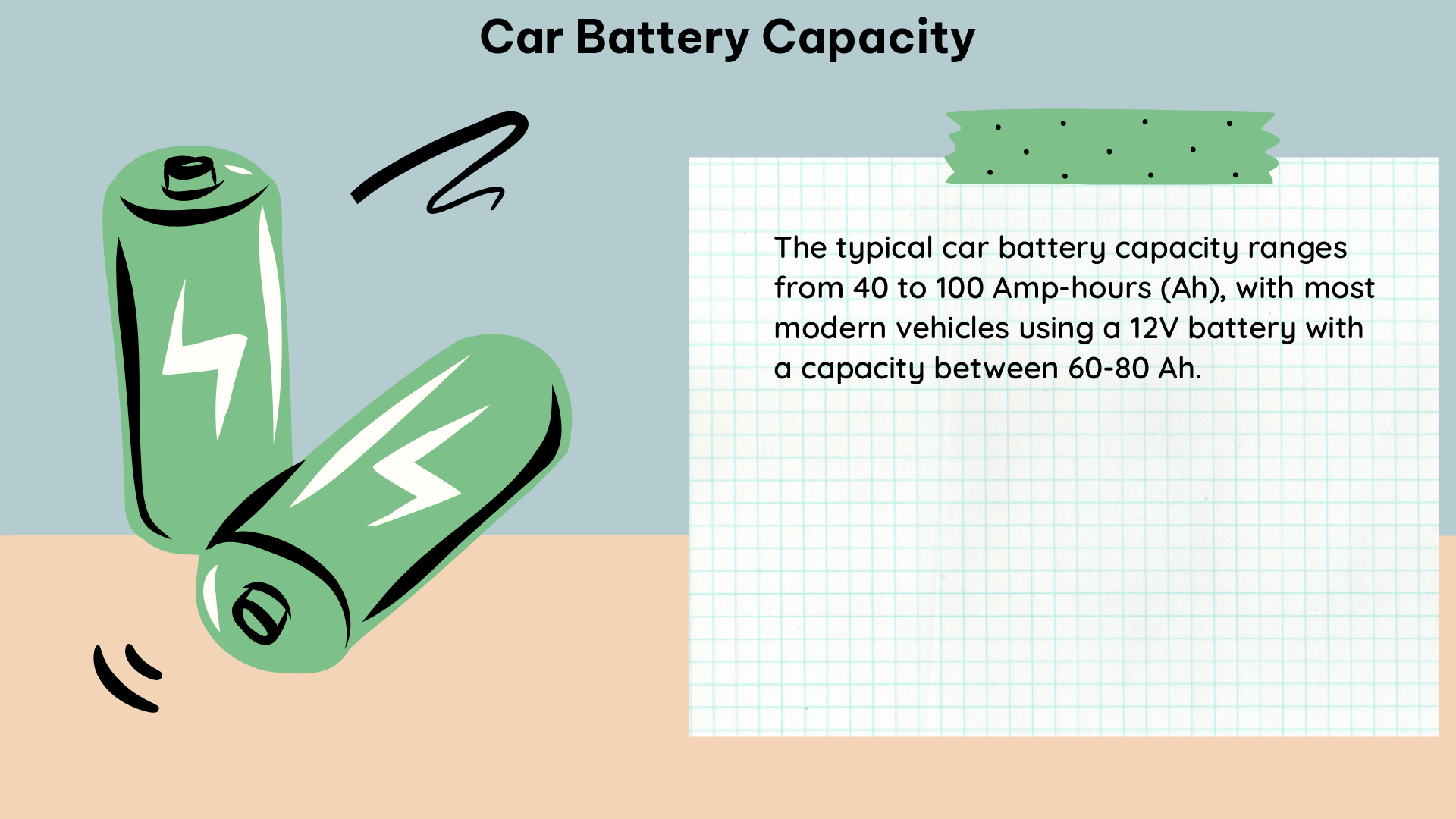The capacity of a car battery is a crucial factor in determining the performance, safety, and environmental impact of electric vehicles (EVs). This comprehensive guide delves into the technical specifications, testing methods, and industry best practices to help you understand and optimize the car battery capacity of your EV.
Understanding Car Battery Capacity
Car battery capacity is typically measured in ampere-hours (Ah) or kilowatt-hours (kWh), with the latter being more common for EVs. The average capacity of EV batteries has been steadily increasing, with the latest models boasting capacities ranging from 40 kWh to 100 kWh or more.
| EV Model | Battery Capacity (kWh) |
|---|---|
| Nissan LEAF | 40 – 62 |
| Tesla Model 3 | 50 – 82 |
| Chevrolet Bolt | 66 |
| Hyundai Kona Electric | 64 |
| Volkswagen ID.4 | 77 – 82 |
As EV adoption continues to grow, the number of lithium-ion batteries in use will also increase. These batteries have a finite lifetime, and the number of batteries reaching the end-of-life stage is expected to rise dramatically in the coming years. Proper battery testing protocols are essential to ensure responsible EV adoption and use.
Assessing Car Battery Capacity

There are several methods to assess the capacity of a car battery, each with its own advantages and considerations.
Charge and Discharge Testing
One simple way to test the battery capacity is to charge the car for a specific amount of time and then compare the change in battery percentage to the change in battery capacity (State of Charge, or SOC). For example, adding 33 kWh to a Chevrolet Bolt battery that is 66 kWh in size should result in a SOC change of 50%.
It’s important to test a variety of ranges to ensure the Battery Management System (BMS) can accurately determine various battery percentages and that the battery is receiving the expected amount of energy.
Onboard Diagnostic Devices
Another approach to measuring car battery capacity is through the use of onboard diagnostic (OBDII) devices. These devices tap into the BMS to provide quantitative data, such as battery temperature, battery voltage, and State of Health (SOH).
Software solutions like Tessie or TeslaFi for Tesla, or LeafSpy for Nissan LEAF, can also provide detailed evaluations of battery health for specific EV brands.
Design Validation and Manufacturing Testing
For manufacturers, design validation and manufacturing stage testing play a critical role in identifying any design flaws, manufacturing defects, or deviations from quality standards. The data gathered from these tests helps manufacturers refine the battery design, enhance manufacturing processes, and ensure that only reliable and safe batteries reach the market.
Some key tests performed during the design validation and manufacturing stages include:
- Capacity Retention Test: Measures the battery’s ability to retain its capacity over time and under various operating conditions.
- Cycle Life Test: Evaluates the battery’s performance and degradation over a large number of charge-discharge cycles.
- Thermal Abuse Test: Assesses the battery’s behavior under extreme temperature conditions, both high and low.
- Mechanical Abuse Test: Examines the battery’s response to physical stresses, such as vibration, shock, and crush.
- Electrical Abuse Test: Evaluates the battery’s performance under abnormal electrical conditions, such as overcharge, short circuit, and overdischarge.
The results of these tests help manufacturers optimize the battery design, improve manufacturing processes, and ensure the safety and reliability of the final product.
Maximizing Car Battery Capacity
To maximize the capacity and lifespan of your car battery, it’s important to follow best practices for battery care and maintenance. This includes:
- Proper Charging Habits: Avoid frequent full discharges and rapid charging, as these can accelerate battery degradation. Aim for moderate charging levels (20-80% SOC) whenever possible.
- Temperature Management: Extreme temperatures, both hot and cold, can negatively impact battery performance and lifespan. Park your EV in a shaded or climate-controlled area when possible.
- Regular Battery Checks: Utilize onboard diagnostics and software tools to monitor your battery’s health regularly. Address any issues or anomalies promptly.
- Battery Replacement Timing: Replace your battery when its capacity drops below a certain threshold, typically around 70-80% of the original capacity. This can help maintain optimal performance and safety.
By understanding the technical specifications, testing methods, and best practices for car battery capacity, you can ensure your EV operates at its peak performance, safety, and environmental efficiency.
References:
- Zhao, J., Burke, A.F. (2022). Electric Vehicle Batteries: Status and Perspectives of Data-Driven Diagnosis and Prognosis. Batteries, 8, 142.
- Zhao, Y., Liu, P., Wang, Z., Zhang, L., Hong, J. (2017). Fault and defect diagnosis of battery for electric vehicles based on big data analysis methods. Appl. Energy, 207, 354-362.
- Recurrent Auto. (2023). Deep Dive: How Can We Test an EV Battery? – Recurrent. Retrieved from https://www.recurrentauto.com/research/all-about-battery-testing
- U.S. Department of Energy. (2022). Electric Vehicle Batteries. Retrieved from https://www.energy.gov/eere/vehicles/articles/electric-vehicle-batteries
- Battery University. (2023). BU-1003: Electric Vehicle (EV) Battery. Retrieved from https://batteryuniversity.com/article/bu-1003-electric-vehicle-ev-battery

The lambdageeks.com Core SME Team is a group of experienced subject matter experts from diverse scientific and technical fields including Physics, Chemistry, Technology,Electronics & Electrical Engineering, Automotive, Mechanical Engineering. Our team collaborates to create high-quality, well-researched articles on a wide range of science and technology topics for the lambdageeks.com website.
All Our Senior SME are having more than 7 Years of experience in the respective fields . They are either Working Industry Professionals or assocaited With different Universities. Refer Our Authors Page to get to know About our Core SMEs.